Inducted July 2016
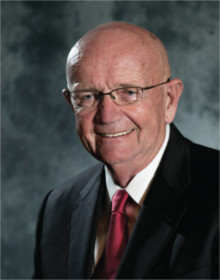
General Gordon R. Sullivan is recognized for the innovative use of simulation to design, equip and train the United Sates Army. Patterned after George C. Marshall’s Louisiana Maneuvers of the 1940s that prepared the Army for World War II, General Sullivan recognized the need to reset our Army post-cold war and Desert Storm. The 1990’s Louisiana Maneuvers provided the vision and leadership needed for the next century. As the architect of the America’s 21st Century Army, he turned to simulations as the power-resource that led the transition from a forward deployed Cold War Army to CONUS-based Force Projection Army. His policies and leadership redesigned and delivered, through the use of simulations, a new Army with new force structure, new tactics, new equipment and new training that impacted the Army’s focus from foxhole to the industrial base.
General Gordon Russell Sullivan was the 32nd Army Chief of Staff and the visionary and force that made the increased Army Force XXI effort on simulation possible.
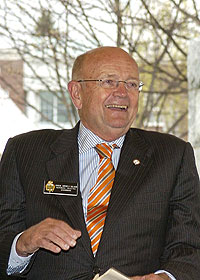
Sullivan was born September 25, 1937, in Boston, Massachusetts, and grew up in nearby Quincy. He was commissioned a second lieutenant of Armor and awarded a Bachelor of Arts degree in history from Norwich University in 1959. He holds a Master of Arts degree in political science from the University of New Hampshire. His professional military education includes the U.S. Army Armor School Basic and Advanced Courses, the Command and General Staff College, and the Army War College.
Before retiring as a United States general, Sullivan served as the 32nd Chief of Staff of the U.S. Army, as a member of the Joint Chiefs of Staff, and also served as Acting Secretary of the Army.
After retiring from the Army he served as the President and Chief Executive Officer of the Association of the United States Army (AUSA) for 18 years, from 1998 thru June 30, 2016. He is currently the Chairman of the Board of Trustees of Norwich University, The Army Historical Foundation and also the Marshall Legacy Project.
Sullivan was married to Miriam Gay Sullivan (née Loftus) of Quincy, Massachusetts until her death in 2014; he currently resides in Alexandria, Virginia. He has three children and three grandchildren. He is an avid reader and historian.
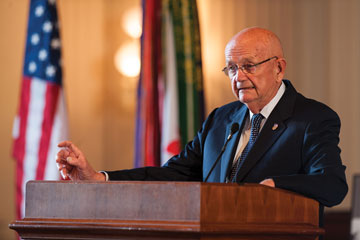
In the early 1990’s General Gordon R. Sullivan was the visionary and architect of the Army’s Force XXI concept. He defined Force XXI as America’s 21st Century Army. He stated, “It will encompass the reconceptualization and redesign of the Force at all echelons, from foxhole to the industrial base. It will also focus on the connectivity at each echelon and within echelons. That is a very broad charter and it is by no means clear that we need a radical shift. But it is clear that we must open our minds to the power of change and ask ourselves, ‘What could be?’”
To prepare the Army for World War II, Generals George C. Marshall and Leslie J. McNair instituted a series of General Headquarters-level maneuvers in Louisiana and the Carolinas to assess progress and serve as a laboratory for investigating issues. This was one of the ways the Army’s implemented training and simulation in the 1940s. General Sullivan. as a great historian and visionary, built on this concept and developed the 1990’s Louisiana Maneuvers (LAM). This vision focused as a rallying point in dealing with change.
It intellectualized the transition from a forward deployed Cold War Army to a CONUS-based Force Projection Army. And it provided a medium to gather the what, how much and when in upgrading doctrine, reassessing force design and material requirements, improving training and readiness, and emphasizing leader development.
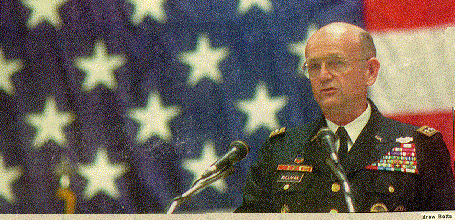
Finally, it demonstrated the thrust areas of Army capabilities by exploiting technology in simulations, communications and analysis to conduct the Army’s Warfighter Mission. As an outcome of Gen. Sullivan’s efforts, the Army increased its use of simulation across the spectrum, from individual and collective training through using models and simulation in the research, development and acquisition (RDA) and military operations domains.
His efforts gave STRICOM the newly formed Army Simulation Training and Instrumentation Command a clear direction in helping define ForceXXI. Besides increasing the Army’s use of generic simulation in training, programs like Distributed Interactive Simulation (DIS) and the Synthetic Theater of War (STOW) were formed and given Army priority to encompass more collective, combined and joint training.
Simulation exercises like Focus Dispatch conducted at Ft. Knox proved that through the use of simulation, the Army digitized battlefield concept would work. Tactics, technology and procedures were developed and conducted in simulation to make this concept a reality.This digitization of the Army proved itself on the battlefield during Iraqi Freedom in 2003, where America’s new digital equipped Force XXI Army performed flawlessly.
General Gordon Sullivan, the 32nd Army Chief of Staff was the visionary and force that made this increased Army Force XXI effort on simulation possible.
MLI Founded in 1997
Founder and Chairman, now currently MLI Board of Directors
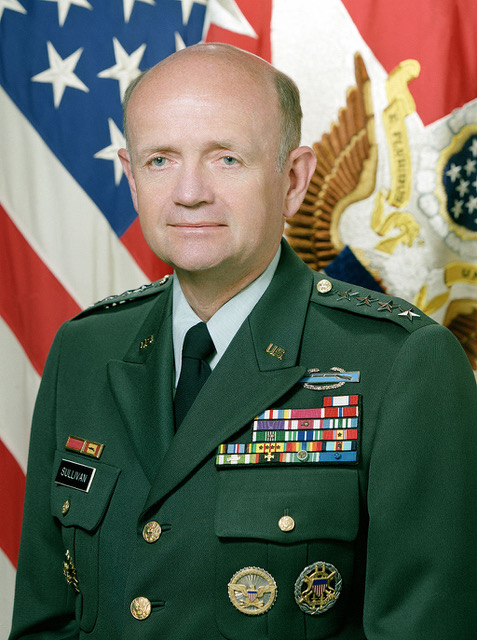
Through his quiet leadership, General Sullivan has instituted programs that solve real world problems with focused, feasible solutions. He founded the Marshall Legacy Institute (MLI) in 1997 to extend the vision and legacy of Nobel Peace Laureate George C. Marshall by helping countries help themselves in nurturing stability and promoting social-economic growth. MLI implements the largest mine detection dog training and placement program in the world. Recognized as a leader in this area, MLI has placed over 200 highly trained mine detection dog teams in more than a dozen countries. The non-profit organization has provided medical assistance, rehabilitative care, and vocational training to hundreds of landmine survivors. MLI engages civil society in the humanitarian issue, fosters global citizenship, and empowers American youth to make a meaningful difference in the world by helping others, especially children, living in mine-threatened communities. Targeting nations with the largest problems, (Afghanistan, Angola, Bosnia, Iraq, etc.), MLI has been a singular success, recognized by the US Department of State, the United Nations, numerous foreign governments, and many non-governmental humanitarian organizations.
http://marshall-legacy.org/about-2/
The Thayer Award recipient is a non-West point graduate who has qualities in which exemplify the West Point motto: “duty, honor, and country.” General Sullivan received this award after a long line of other distinguished recipients, as he was recognized for his military service, as well as continued support for and with the Army, with a profound, lasting effect on American Soldiers.
http://www.westpointaog.org/thayerward
http://www.westpointaog.org/page.aspx?pid=507
The CGSC, Command and General Staff College Foundation,Inc., awards a Distinguished Leadership award annually. Gen. Sullivan received his award with them in 2009. He is the second recipient of the award after Gen. (Ret.) Colin L. Powell. His recognition was due to his 50 years of service to Soldiers, the Army, and the Nation.
http://www.cgscfoundation.org/foundation-presents-general-sullivan-with-…
http://www.cgscfoundation.org/wp-content/uploads/2011/01/FoundationNews(No7-Fall2009).pdf (Page 17)